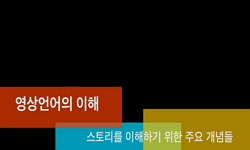의사소통에 어려움을 겪는 아동들의 의사소통 참여를 높이기 위해 보완·대체의사소통(Augmantative and Alternative Communication:AAC) 중재 및 도구에 관한 연구가 과거에 비해 많이 진행되고 있다. 의...
http://chineseinput.net/에서 pinyin(병음)방식으로 중국어를 변환할 수 있습니다.
변환된 중국어를 복사하여 사용하시면 됩니다.
- 中文 을 입력하시려면 zhongwen을 입력하시고 space를누르시면됩니다.
- 北京 을 입력하시려면 beijing을 입력하시고 space를 누르시면 됩니다.
학령전기 아동의 내러티브 과제에서 나타나는 어휘사용 특성 : 보완·대체의사소통 중재를 위한 기초연구 = Preschool-Aged Children’s Vocabulary Use Characteristics In Narrative Tasks : A Preliminary Study For Augmentative & Alternative Communication Intervention
한글로보기https://www.riss.kr/link?id=T13890222
- 저자
-
발행사항
성남: 가천대학교 특수치료대학원, 2015
-
학위논문사항
학위논문(석사) -- 가천대학교 특수치료대학원 , 특수치료학과 언어치료전공 , 2015. 8
-
발행연도
2015
-
작성언어
한국어
- 주제어
-
DDC
616.855 판사항(23)
-
발행국(도시)
경기도
-
형태사항
vii, 73 p.: 삽도; 26 cm.
-
일반주기명
지도교수: 박현주
참고문헌 : p.44-46 - 소장기관
-
0
상세조회 -
0
다운로드
부가정보
국문 초록 (Abstract)
본 연구에서는 서울에 사는 4, 5, 6세 아동을 대상으로 세 가지 내러티브 과제를 통해 발화를 수집하여, 핵심어휘를 파악하고, AAC적용을 위한 어휘 목록의 기초 자료를 제공하고자 하였다.
연구 대상은 서울 지역에 거주하는 만 4∼6세 일반 아동 53명(남 26명, 여 27명)으로, 세 가지 과제(이야기 다시 말하기, 개인적 경험 말하기, 이야기 구성하기)를 통해 발화를 수집하였다. 수집한 발화를 분석하여 과제 유형 및 연령집단에 따른 고빈도 어휘를 알아보고, 핵심어휘가 전체 어휘에서 차지하는 비율을 알아보았으며, 핵심어휘의 구조어와 내용어의 비율을 분석하고, 전체 과제에서 나타나는 부수어휘와 그 비율을 알아보았다.
본 연구의 결과는 다음과 같다.
첫째, 과제 및 연령별로 산출한 핵심어휘는 과제 유형, 연령 집단에 따라 영향을 받는 것으로 나타났다.
둘째, 핵심어휘는 전체낱말수(NTW:Number of Total Words)의 72%를 차지하여 소수의 핵심어휘가 전체 어휘의 많은 부분을 대표하는 것으로 나타났다.
셋째, 핵심어휘에서 나타난 구조어와 내용어의 비율은 19:81로 내용어가 차지하는 비율이 더 높은 것으로 나타났다.
넷째, 부수어휘가 전체 낱말수에서 차지하는 비율은 7.453%로 높지 않은 것으로 나타났다.
본 연구를 통해 과제 및 연령에 따라 어휘 사용에 차이가 있음을 알 수 있었다. 또한 소수의 핵심어휘가 전체 발화에서 높은 빈도로 사용되며, 핵심어휘는 구조어에 비해 내용어의 비율이 더 높았다. 부수어휘가 전체어휘에서 차지하는 비율이 높지 않음을 알 수 있었다. 대부분의 기존 연구는 대화체 상황에 국한된 어휘 사용 패턴을 조사하였으나 본 연구는 구조화된 내러티브 과제를 통해 학령전기 아동이 산출하는 긴 이야기를 수집하였고, 이를 통해 아동의 어휘 사용이 과제의 영향을 크게 받음을 확인하였다. AAC 중재를 위한 어휘 선택 정보를 얻기 위해서는 다양한 과제를 활용하여 어휘 수집해야 할 필요성을 밝혔다는 데 그 의의가 있다.
의사소통에 어려움을 겪는 아동들의 의사소통 참여를 높이기 위해 보완·대체의사소통(Augmantative and Alternative Communication:AAC) 중재 및 도구에 관한 연구가 과거에 비해 많이 진행되고 있다. 의사소통을 얼마나 효과적이고 효율적으로 할 수 있는지의 여부는 적절한 어휘를 얼마나 잘 선택했는가에 달려 있기에 AAC 영역에서 어휘연구는 꾸준히 이루어져 왔다. 그러나 내러티브가 발달하기 시작하는 학령 전기 아동을 대상으로 한 실질적인 어휘 연구는 거의 이루어지지 않은 실정이다.
본 연구에서는 서울에 사는 4, 5, 6세 아동을 대상으로 세 가지 내러티브 과제를 통해 발화를 수집하여, 핵심어휘를 파악하고, AAC적용을 위한 어휘 목록의 기초 자료를 제공하고자 하였다.
연구 대상은 서울 지역에 거주하는 만 4∼6세 일반 아동 53명(남 26명, 여 27명)으로, 세 가지 과제(이야기 다시 말하기, 개인적 경험 말하기, 이야기 구성하기)를 통해 발화를 수집하였다. 수집한 발화를 분석하여 과제 유형 및 연령집단에 따른 고빈도 어휘를 알아보고, 핵심어휘가 전체 어휘에서 차지하는 비율을 알아보았으며, 핵심어휘의 구조어와 내용어의 비율을 분석하고, 전체 과제에서 나타나는 부수어휘와 그 비율을 알아보았다.
본 연구의 결과는 다음과 같다.
첫째, 과제 및 연령별로 산출한 핵심어휘는 과제 유형, 연령 집단에 따라 영향을 받는 것으로 나타났다.
둘째, 핵심어휘는 전체낱말수(NTW:Number of Total Words)의 72%를 차지하여 소수의 핵심어휘가 전체 어휘의 많은 부분을 대표하는 것으로 나타났다.
셋째, 핵심어휘에서 나타난 구조어와 내용어의 비율은 19:81로 내용어가 차지하는 비율이 더 높은 것으로 나타났다.
넷째, 부수어휘가 전체 낱말수에서 차지하는 비율은 7.453%로 높지 않은 것으로 나타났다.
본 연구를 통해 과제 및 연령에 따라 어휘 사용에 차이가 있음을 알 수 있었다. 또한 소수의 핵심어휘가 전체 발화에서 높은 빈도로 사용되며, 핵심어휘는 구조어에 비해 내용어의 비율이 더 높았다. 부수어휘가 전체어휘에서 차지하는 비율이 높지 않음을 알 수 있었다. 대부분의 기존 연구는 대화체 상황에 국한된 어휘 사용 패턴을 조사하였으나 본 연구는 구조화된 내러티브 과제를 통해 학령전기 아동이 산출하는 긴 이야기를 수집하였고, 이를 통해 아동의 어휘 사용이 과제의 영향을 크게 받음을 확인하였다. AAC 중재를 위한 어휘 선택 정보를 얻기 위해서는 다양한 과제를 활용하여 어휘 수집해야 할 필요성을 밝혔다는 데 그 의의가 있다.
다국어 초록 (Multilingual Abstract)
The goals of this study were to assign three narrative tasks to Seoulite children aged four to six and to collect their speech production, discover their core vocabulary, and provide basic data of lexical lists for AAC application.
The subjects of the study were 53 average children (26 male, 27 female) aged 4, 5, or 6 and residing in the area of Seoul. Speech production was collected from these children through three narrative tasks: a story-retelling task, a personal narrative task, and a narrative-crafting task. The collected speech production was analyzed to determine high frequency vocabulary by task type and age group, as well as the proportion of core vocabulary to total vocabulary, the proportions of structure words and content words to the core vocabulary, the fringe vocabulary that appeared throughout all three tasks, and the proportion of fringe vocabulary to total vocabulary.
The results of the study are as follows.
First, the core vocabulary derived by task and age appeared to be affected by the type of narrative task and by the age group of the subjects.
Second, the core vocabulary appeared to occupy 72% of the number of total words (NTW).
Third, the proportion of structure words to content words within the core vocabulary was 19:81, with contents words occupying the greater part.
Fourth, the proportion to NTW occupied by fringe vocabulary was 7.453%, and thus not very high.
The results of the study show that lexical usage differs by task and age. Also, a minority of core vocabulary is used with high frequency in the total speech production, and there is a greater proportion of content words than structure words in the core vocabulary. It was apparent that the proportion of fringe vocabulary to total vocabulary was not large. While most existing research has studied patterns of lexical usage limited to dialogic situations, this study collected long stories produced by preschool-aged children by means of structured narrative tasks, and through this data confirmed that children’s lexical usage is greatly influenced by the narrative task they are performing. The study is significant because it reveals the need to collect vocabulary from a variety of tasks in order to gain information about lexical selection for AAC intervention.
A great deal of research is being done these days on Augmentative and Alternative Communication (AAC) intervention and tools to encourage communication in children with communication disorders. Because communicative effectiveness and efficiency depend...
A great deal of research is being done these days on Augmentative and Alternative Communication (AAC) intervention and tools to encourage communication in children with communication disorders. Because communicative effectiveness and efficiency depend on one’s ability to make correct and appropriate lexical choices, lexical studies have consistently been conducted in the field of AAC. However, there has been next to no practical lexical research aimed at children of preschool age, when narrative abilities begin to emerge.
The goals of this study were to assign three narrative tasks to Seoulite children aged four to six and to collect their speech production, discover their core vocabulary, and provide basic data of lexical lists for AAC application.
The subjects of the study were 53 average children (26 male, 27 female) aged 4, 5, or 6 and residing in the area of Seoul. Speech production was collected from these children through three narrative tasks: a story-retelling task, a personal narrative task, and a narrative-crafting task. The collected speech production was analyzed to determine high frequency vocabulary by task type and age group, as well as the proportion of core vocabulary to total vocabulary, the proportions of structure words and content words to the core vocabulary, the fringe vocabulary that appeared throughout all three tasks, and the proportion of fringe vocabulary to total vocabulary.
The results of the study are as follows.
First, the core vocabulary derived by task and age appeared to be affected by the type of narrative task and by the age group of the subjects.
Second, the core vocabulary appeared to occupy 72% of the number of total words (NTW).
Third, the proportion of structure words to content words within the core vocabulary was 19:81, with contents words occupying the greater part.
Fourth, the proportion to NTW occupied by fringe vocabulary was 7.453%, and thus not very high.
The results of the study show that lexical usage differs by task and age. Also, a minority of core vocabulary is used with high frequency in the total speech production, and there is a greater proportion of content words than structure words in the core vocabulary. It was apparent that the proportion of fringe vocabulary to total vocabulary was not large. While most existing research has studied patterns of lexical usage limited to dialogic situations, this study collected long stories produced by preschool-aged children by means of structured narrative tasks, and through this data confirmed that children’s lexical usage is greatly influenced by the narrative task they are performing. The study is significant because it reveals the need to collect vocabulary from a variety of tasks in order to gain information about lexical selection for AAC intervention.
목차 (Table of Contents)
- 논문개요 ⅵ
- Ⅰ. 서론 1
- A. 연구의 필요성 및 목적 1
- B. 연구문제 2
- C. 용어 정의 3
- 논문개요 ⅵ
- Ⅰ. 서론 1
- A. 연구의 필요성 및 목적 1
- B. 연구문제 2
- C. 용어 정의 3
- Ⅱ. 이론적 배경 5
- A. 보완․대체 의사소통과 어휘 선택 5
- 1. 보완․대체 의사소통 체계의 개념 5
- 2. 보완․대체 의사소통 체계와 어휘 선택 6
- B. 내러티브와 어휘 사용 특성 8
- 1. 내러티브의 개념 8
- 2. 내러티브에서 나타나는 어휘 사용 특성 10
- Ⅲ. 연구 방법 13
- A. 연구대상 13
- B. 검사기간 14
- C. 연구방법 14
- 1. 연구도구 14
- 2. 연구절차 14
- 3. 발화분석 15
- 4. 신뢰도 18
- Ⅳ. 연구 결과 19
- A. 과제 및 연령집단별 고빈도 어휘 20
- 1. 과제별 고빈도 어휘 20
- 2. 연령집단별 고빈도 어휘 23
- B. 핵심어휘 29
- C. 핵심어휘의 구조어와 내용어 비율 34
- D. 전체 과제에서 나타나는 부수어휘와 그 비율 38
- Ⅴ. 결론 및 논의 39
- A. 결론 및 논의 39
- B. 제한점 42
- C. 제언 42
- 참고문헌 44
- 부록 47
- ABSTRACT 71










